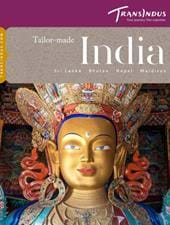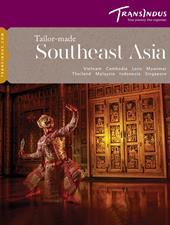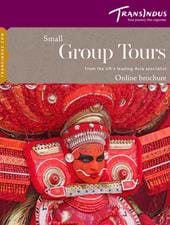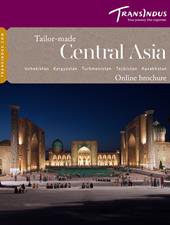Every year on August 15th, the Indian Prime Minister hoists a fluttering green, white and orange tricolour from the ramparts of the Red Fort in Delhi – a tradition begun by India’s first ever PM, Jawaharlal Nehru, in 1947 when the country first gained independence.
That Nehru chose the then rather dilapidated Red Fort (or ‘Lal Qila’) over the newer and much more imposing British-built capital complex in New Delhi for the momentous flag raising ceremony speaks volumes. Since work on it was completed in 1648, the Mughal citadel has been the emblem ‘par excellence’ of Indian national pride. It dates from a time when the Mughal empire was at its zenith and India was the wealthiest country on earth.
Shah Jehan, the emperor who commissioned the building, wanted the fort to epitomize Mughal power and the great sophistication of Indian culture. It achieved both goals with flying colours and, although laid low by the depredations inflicted upon as the Mughal Empire declined, the Red Fort complex remains the capital’s most iconic landmark and an obligatory stop on any sightseeing tour of the city.
What is the history of the Red Fort?
Shah Jehan’s architect in chief, Ustad Ahmad Lahori, the genius behind the Taj Mahal, is believed to have been the principal designer of the palace. The red sandstone used throughout is the same stone Akbar, Shah Jehan’s grandfather, chose for his great capital at Fatepur Sikri, and which was used in the construction of the Mughal fortress-palace in Agra. As with these two older monuments, Delhi’s Red Fort also made extensive use of white marble to create wonderful inlay around doorways and parapets, and for some of the most lavishly decorated royal apartments inside.
From the outside, the towering walls, crenellated ramparts and fortified gateways leave you in no doubt that this was a building designed to repel attacks. Inside, though, the architecture tells a different story. Some of the most delicate and beautiful buildings ever made in the medieval world were created for the emperor, his queens, consorts, children, courtiers and servants – a population of several thousand, most of whom lived in unimaginable luxury, surrounded by silk carpets and exquisite art. Miniature paintings from the period record the extravagant music, dance and poetry recitals held in the palace gardens, the sumptuous processions of caparisoned elephants staged in the streets outside, and the great Durbars in which rulers from across the empire would come to pay their respects in the vast pillared audience halls at the heart of the fort.
Was the Red Fort ever attacked?
Several times. Firstly, and most disastrously, by the Persian warlord Nadir Shah in 1739. The Persians carried away the fabulously bejewelled Peacock Throne (which incorporated the famous Kohinoor Diamond) along with most of the city’s wealth – a blow from which the Mughal Dynasty never fully recovered. In later times, the fort was taken by Rohilla Afghans, Marathas and, ultimately, the East India Company. The British installed a succession of puppet rulers on a replica of the Peacock Throne, the last of them, the ill-fated Bahadur Shah II.
What happened to the palace complex under British rule?
Although by nature an aesthete and poet, Bahadur Shah II found himself the focal point of bloody uprising in 1857, when the fort was occupied by rebels seeking to oust the East India Company. The British, however, mounted a devastating counterattack, massacring the insurrectionists and exiling the last Mughal emperor and his family to Burma, where he died under house arrest.
Thereafter, the Red Fort was plundered by British troops. Many of its interior apartments were demolished to make way for military barracks. Nearly two-thirds of all the structures formerly inside the palace disappeared during the British occupation.
What is inside the Lal Qila?
Thankfully, some of the finest structures survived the British onslaught, among them the intricately decorated Mumtaz Mahal, where the chief consort and her entourage resided, and the Diwan-i-Khas, or ‘Hall of Public Audience’, where the Peacock Throne once stood. Beyond lie the remnants of the fort's most palatial royal apartments, bath, and the tower where the emperor would show himself to his subjects each morning.
The vestiges, although a much reduced since their heyday, still convey a sense of how magnificent the complex must have been at the height of Mughal power. A row of arcaded shops just inside the main gates, today known as Meena Bazaar, was originally installed so the women of the palace could shop for clothes and jewellery without leaving purdah. It looks largely as it would have in the Mughal era.
What is the best time to visit the Red Fort?
To avoid the crowds and heat, we always recommend arriving as early in the day as possible, around 7am. TransIndus clients will be met at their hotel by one of our English-speaking guides. In the hour after sunrise, the red sandstone looks at its most beautiful. Note that the palace is closed on Mondays.
Will I need a guide?
You’ll get a lot more from your visit if you’re accompanied by a knowledgeable guide. As well as providing invaluable context for what you’ll see in their commentary on the monuments, he or she will also help with the entrance formalities. If you travel with us, we’ll arrange tickets and transport for you in advance, as well as a qualified, expert, English-speaking guide.
Will I be allowed to take photos inside?
Yes. Regular cameras are allowed, but tripods aren’t. And you won’t be permitted to shoot any video without a special license, arranged several weeks in advance.
Does the Red Fort open in the evenings?
Unlike the Taj Mahal in Agra, the complex closes before sunset. There is, however, a popular sound-and-light show after dark. Timings vary according to the season and language: your TransIndus specialist will be able to advise you and book your tickets.
Are there any other worthwhile sights in the area?
The busy thoroughfare running due west from the Lal Qila, known as Chandni Chowk, was the main street of the old Mughal city, ‘Shahjahanabad’. Lined with Hindu temples, Sikh gurudwaras, mosques and markets, as well as hundreds of small shops selling silver jewellery, spices and clothing, it’s one of the most atmospheric miles in all of Delhi. Highlights include the beautiful, Mughal-era Fatehpuri Masjid, at the far western end of the chowk, the wholesale flower market nearby and a range of famous local eateries specialising in delights such as Amritsari ‘lassi’ and ‘kulfi’, made to recipes little altered since the times of Bahadur Shah II!








